This vegan moussaka is as close to the original as it gets with a classic nutmeg béchamel, cinnamony ragu, and perfectly baked slices of eggplant! Can be made gluten-free and allergen-friendly with substitutions.
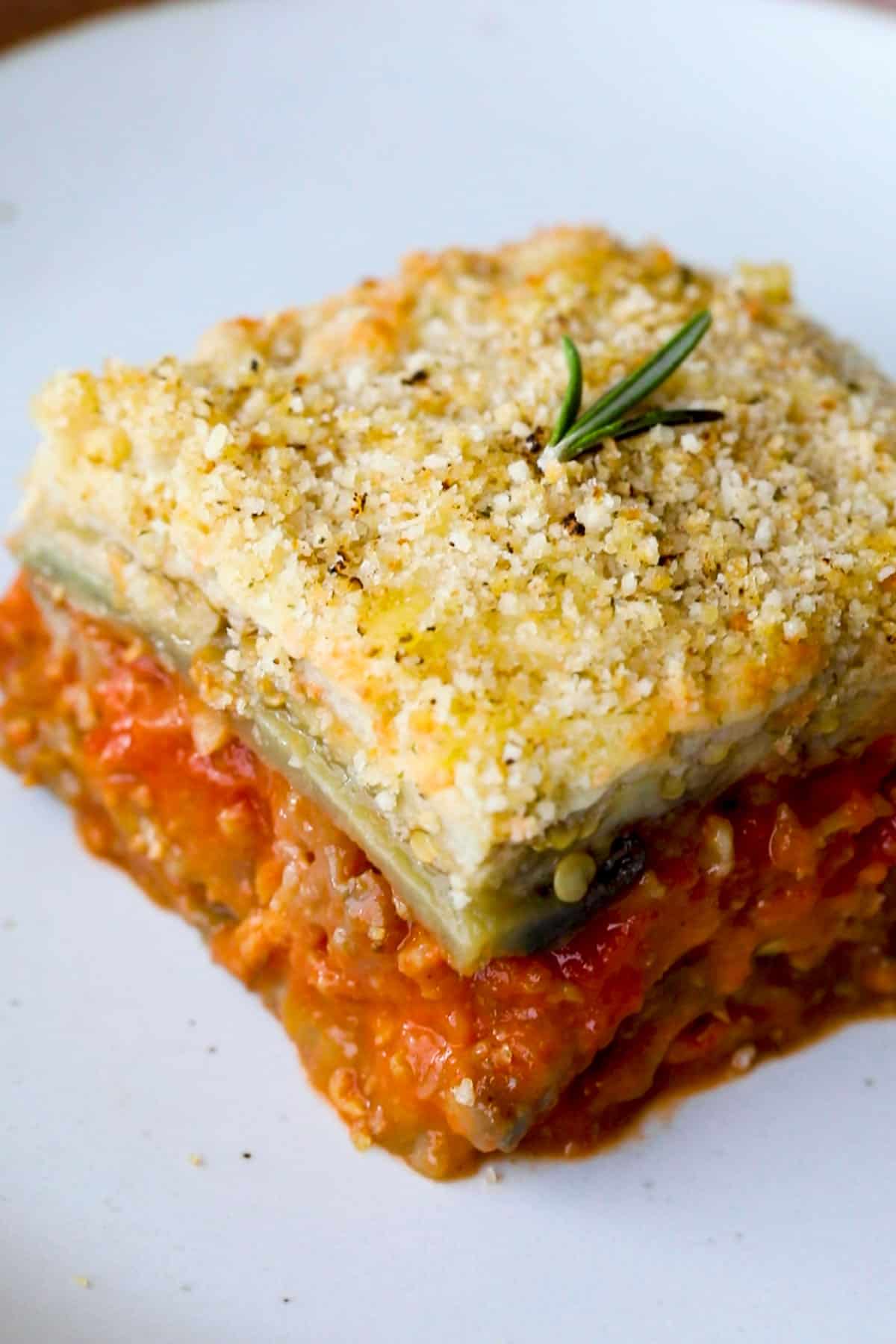
Jump to:
🍽 Moussaka - what is it?
Moussaka is an eggplant-based casserole made with a tomato ragu. The dish is popular in the Balkans as well as the Middle East. Today, the most familiar version of moussaka is from Greek cuisine, which is topped with a thick custardy béchamel.
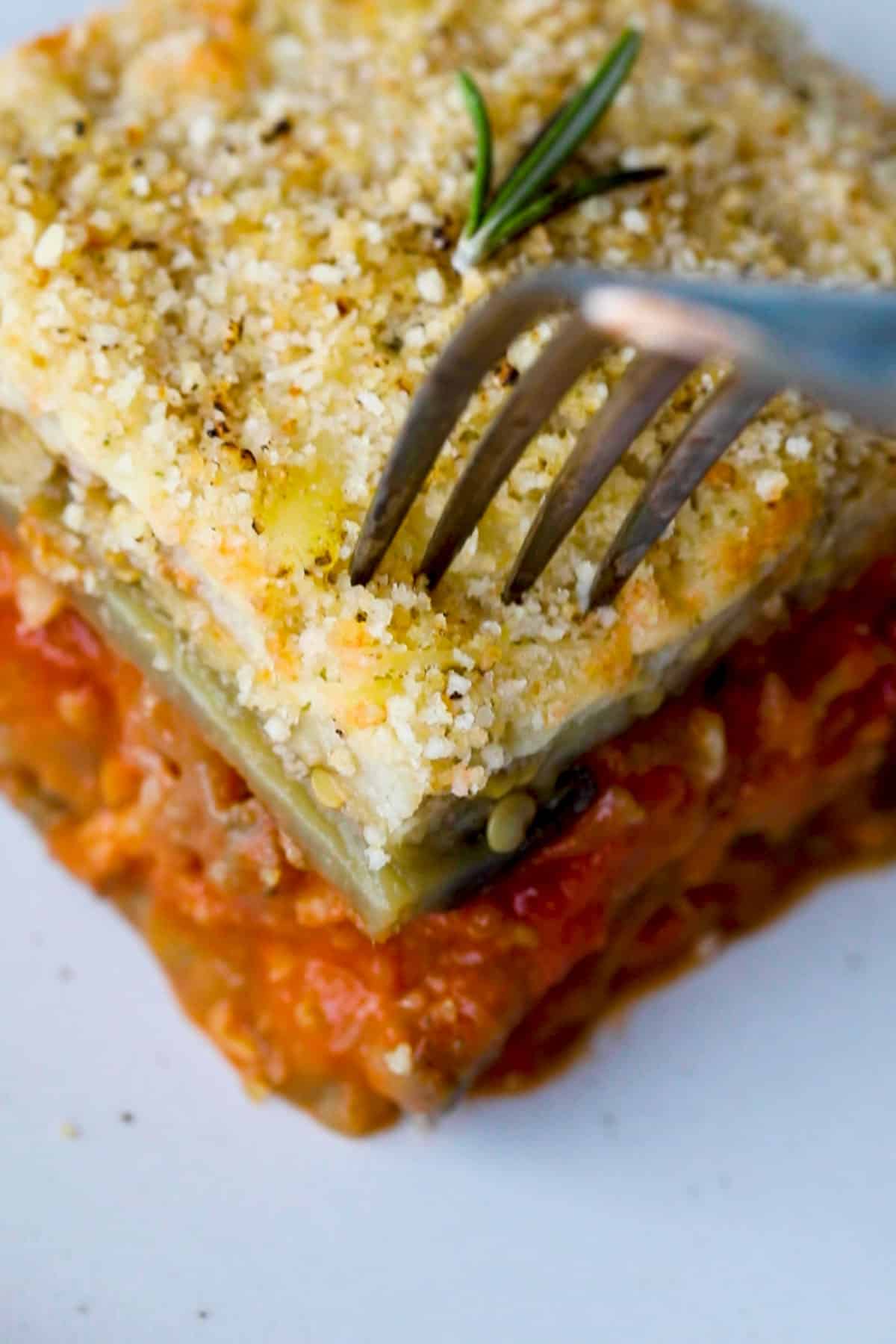
Where is Moussaka from? 🇬🇷🇹🇷🇪🇬
As is the case with most dishes—nobody knows for sure. The most likely origin of moussaka seems to be Arabia or the Levant. An Ottoman, Turabi Efendi, later published the first written recipe of moussaka in his "Turkish Cookery Book" in 1862.
Then why do most people associate moussaka with Greece? That's because in 1920s, a French-educated Greek chef, Nikos Tselementes, modernized the recipe by adding the classic French mother sauce: béchamel. Tensions were high between Turks and Greeks at that time, so it is likely that Chef Tselementes wanted to Europeanize the dish as much as possible.
In short: moussaka most likely originated in the Levant and made its way to Turkey, where it was adopted and modernized by Greeks by way of adding French béchamel sauce to the dish.
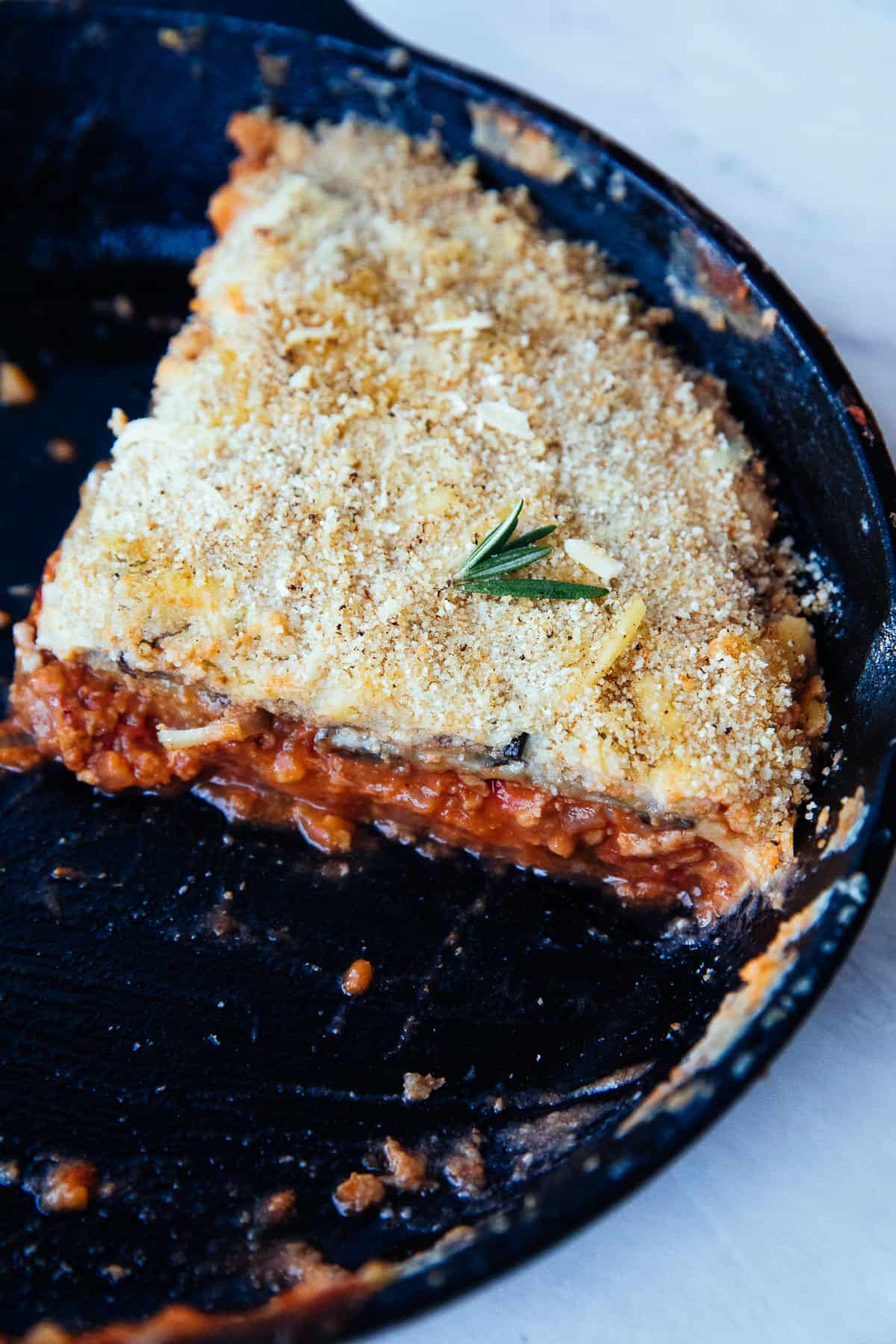
🍅 Ingredient Rundown
Traditionally, there are three components of a Greek moussaka:
- eggplants (or potatoes)
- ragù
- béchamel
Let's break down what's needed for each and how you can substitute them if you wish!
Eggplants
Use Italian (smaller) eggplants if possible, but the regular kind will work just as well. I wouldn't recommend Japanese eggplants for this recipe.
Why Salt Eggplants?
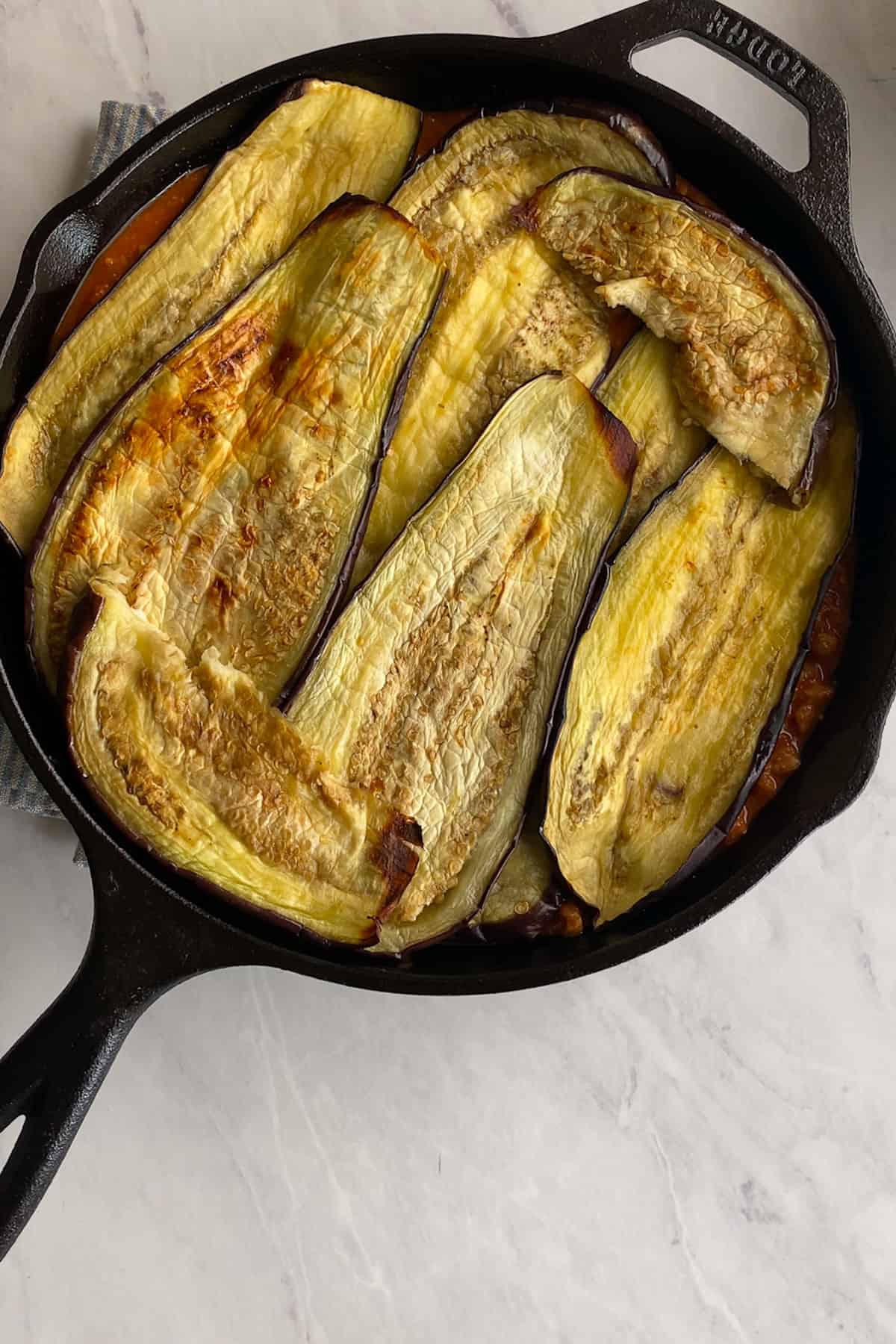
Salting and drying eggplants is a common step when they are used in casseroles. In our recipe, this prevents a soggy moussaka and the only liquid at the bottom of our final dish is the flavorful ragu.
But if you find the process too labor-intensive, simply salt the slices with quarter of the amount and bake them right away. Contrary to popular belief, nowadays salt isn’t necessary for taking out the bitterness of eggplants. Luckily, that bitter taste has been bred out of the modern eggplant.
You Have Options: Some like to add a layer of potato or zucchini slices to their moussaka as well—such as the case with this wonderful Lazy Cat Kitchen recipe! So if you're not a big eggplant fan, feel free to substitute with these other vegetables to your liking or add them all!
Vegan Ragù
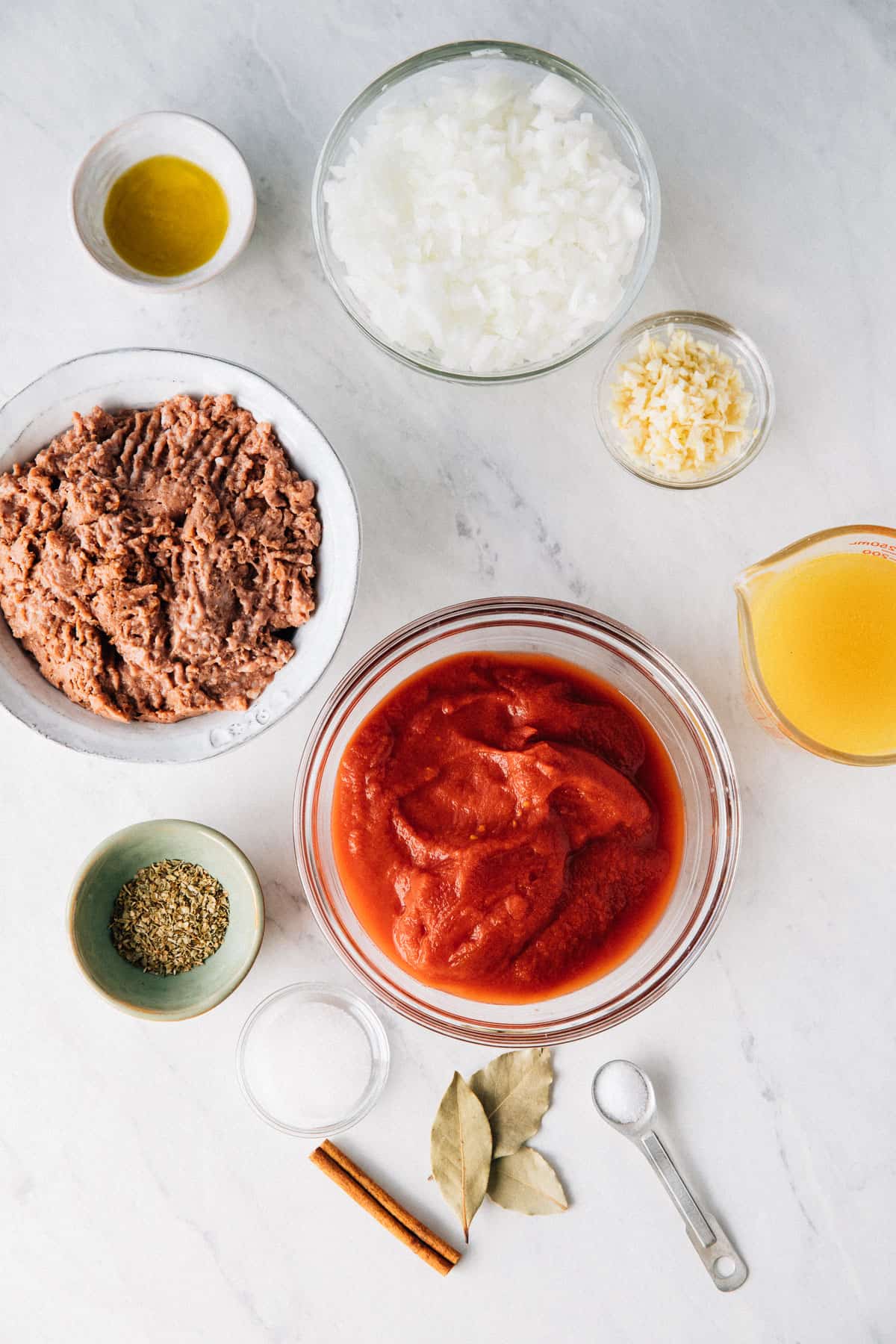
Ragù is is a stew-like, often meat-based sauce. For example, Bolognese is a type of ragu from Bologna. Moussaka typically uses a ragu made with tomatoes, onion, spices, and red wine.
Substituting the traditional ground beef/lamb is very easy! Use this homemade mushroom & walnut mince recipe, or simply purchase one from the grocery store. I love using the Impossible ground beef in this dish.
We'll use red wine, cinnamon, and bay leaves to deepen the flavor. Feel free to substitute as you wish—just make sure the ragù doesn't have too much liquid in the end. It would still taste delicious, but wouldn't hold together like a classic moussaka slice.
Béchamel
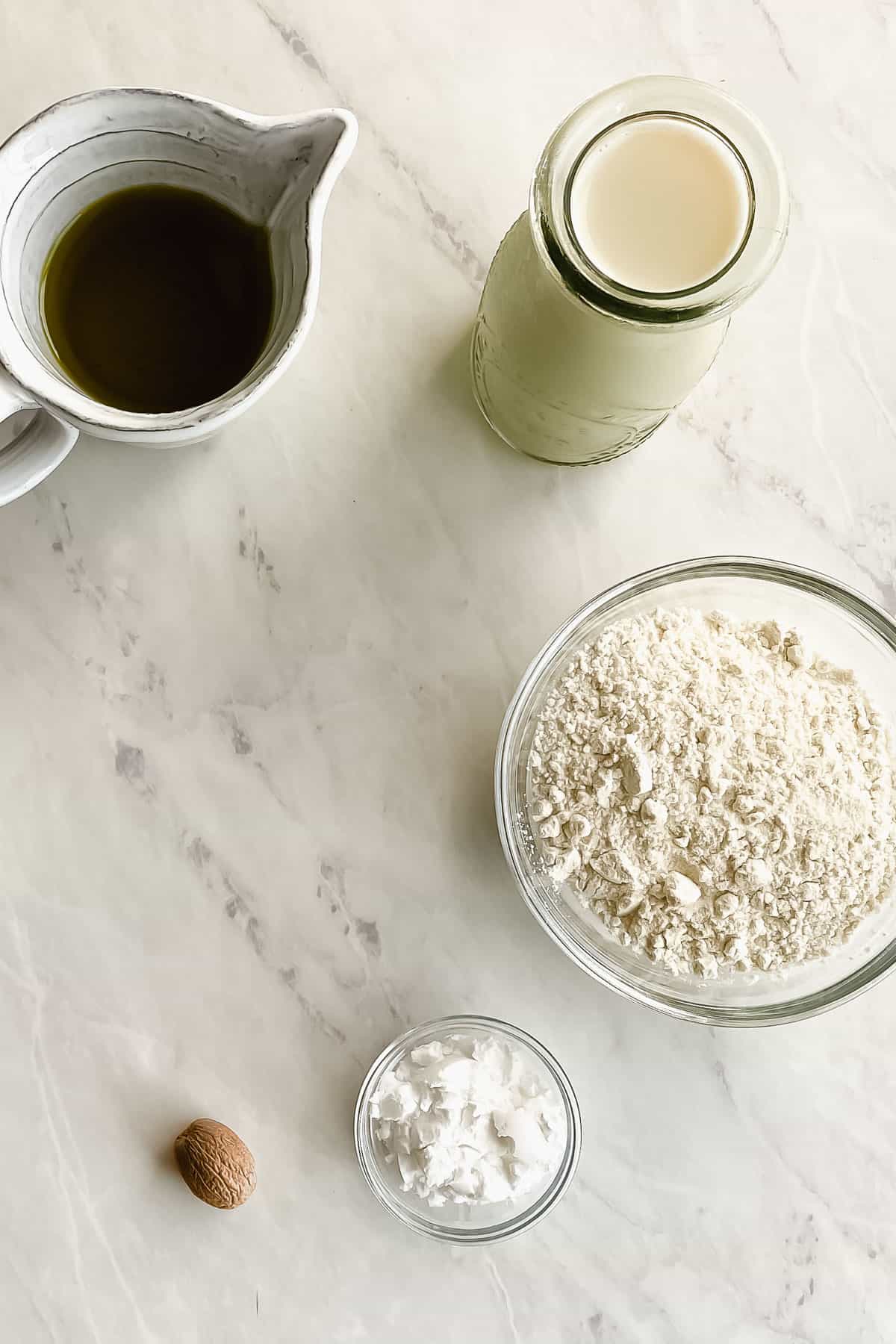
Moussaka béchamel is quite different than the runny white sauce you may be familiar with. This Greek type of béchamel used in moussaka often has eggs for structure.
For a vegan version, in addition to using more flour (~3 tablespoons per cup of plant milk), incorporating potato starch ensures the final dish isn’t runny. You may substitute potato starch with 1.5 times the roux or double the amount of cornstarch if needed.
For a flavorful béchamel, we'll also add a healthy dose of nutmeg (indispensable for a traditional moussaka), as well as garlic powder and white pepper.
Topping
Topping the moussaka with breadcrumbs and a drizzle of olive oil gives us that crunchy layer—a pleasure to bite into! I also like adding some vegan mozzarella shreds for additional richness.
This moussaka recipe uses Panko breadcrumbs for even more crunch as this Japanese type has larger-sized particles. Sounds delicious!
📋 How to Make Vegan Moussaka
Prepare the Eggplants
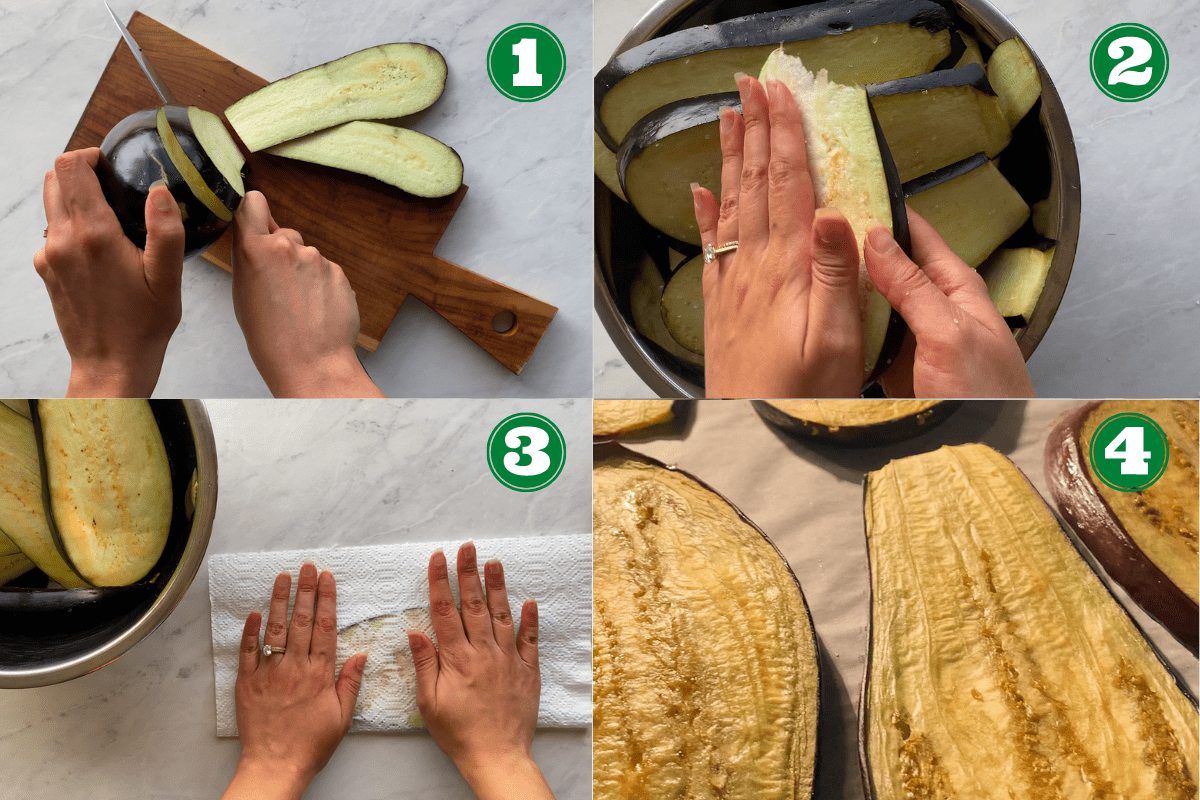
We'll begin by slicing the eggplants lengthwise (quarter-inch slices). This is why Japanese eggplants wouldn't work very well in this dish—but they can still be used if you slice them crosswise.
Liberally salt all sides and place in a colander to sweat. You'll likely be surprised by all the water that drips out! After about half an hour, we'll thoroughly dry the eggplant slices with cloth napkins or paper towels.
Place on baking trays lined with parchment paper or silicone sheets and brush both sides with olive oil. Bake for 20 minutes until golden brown and set aside.
Make Vegan Ragù
We'll add all the ingredients one by one to build an immensely flavorful ragù with cinnamon and oregano. Make sure to dissolve the vegetable bouillon in hot water in a separate bowl before adding into the pot.
To prevent a soggy moussaka—make sure to cook the ragù down enough so that a dipped spoon can stay upright for a bit!
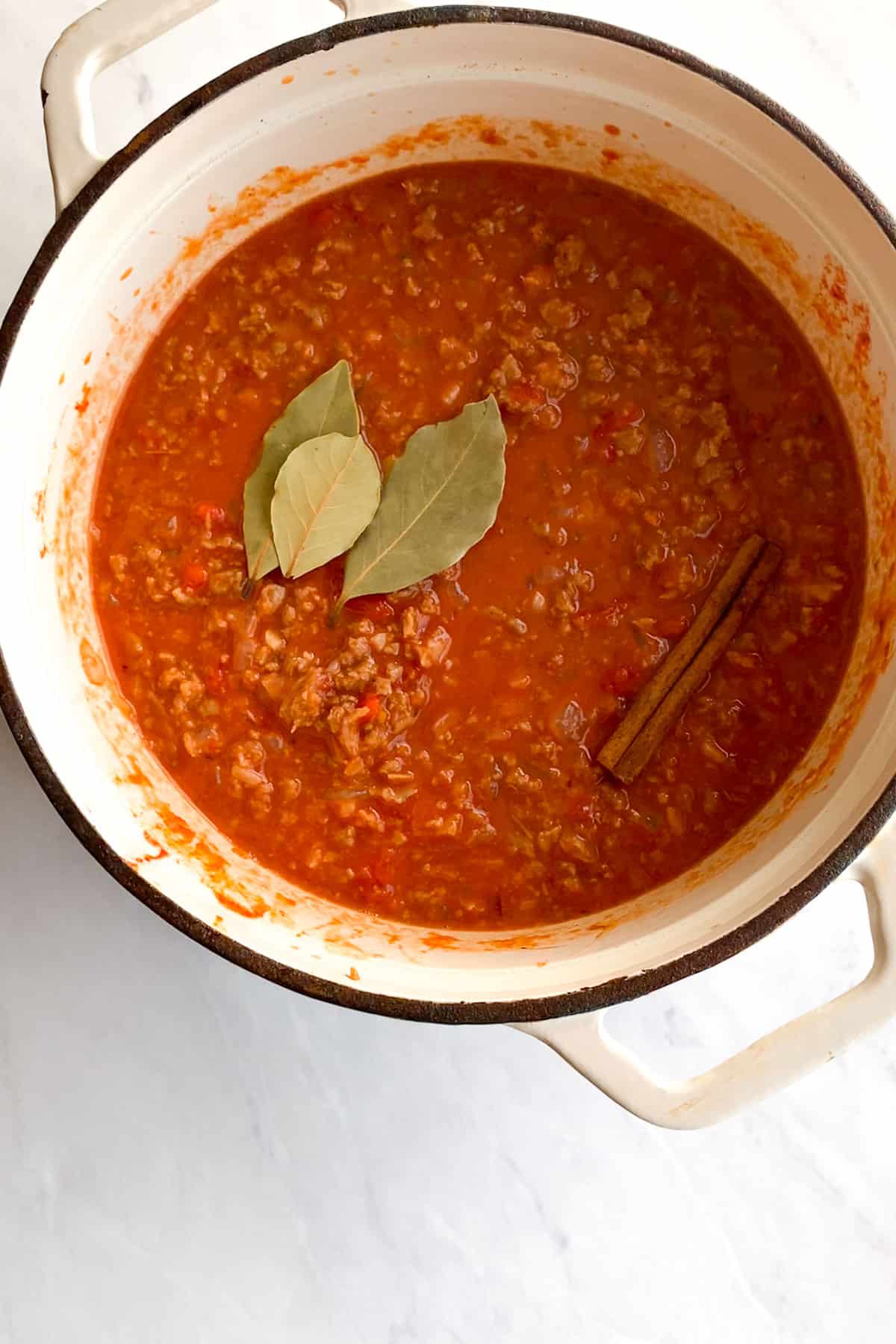
Don't want to use vegan ground beef at all? Substitute with cooked green or brown lentils instead!
Make the Béchamel
We'll prepare the vegan béchamel by making roux and then adding unflavored, unsweetened plant milk, as well as spices and the starch.
If for some reason your béchamel clumps, there are a few options:
- Add ice-cold water and whisk like a banshee
- Use a hand-held blender to incorporate the rest of the flour
- Sieve out the clumps and add slightly more potato starch to make up for the thickening effect
If not using right away to top the moussaka, press a piece of plastic wrap over the surface of the sauce to prevent a skin from forming.
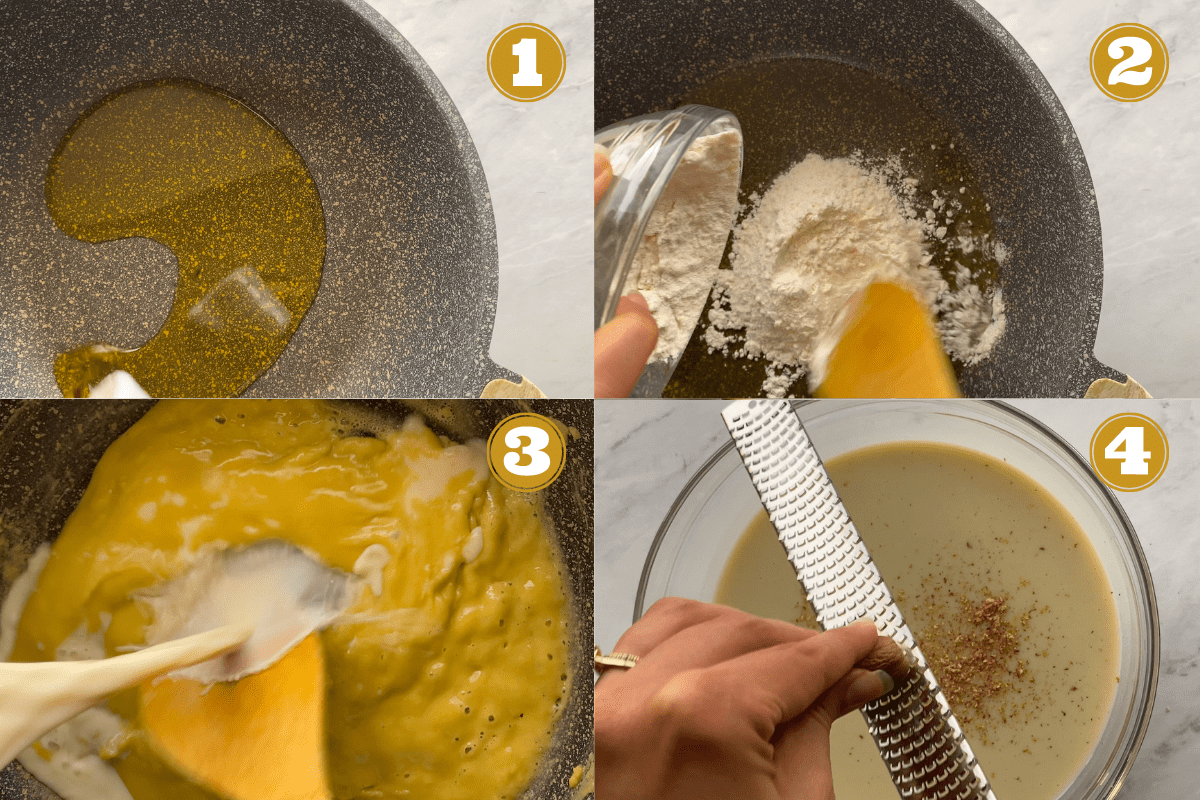
Layer Everything
There is some debate about whether to start layering with the meat sauce or the eggplant. I prefer layering a little bit of the ragu at the bottom à la lasagna:
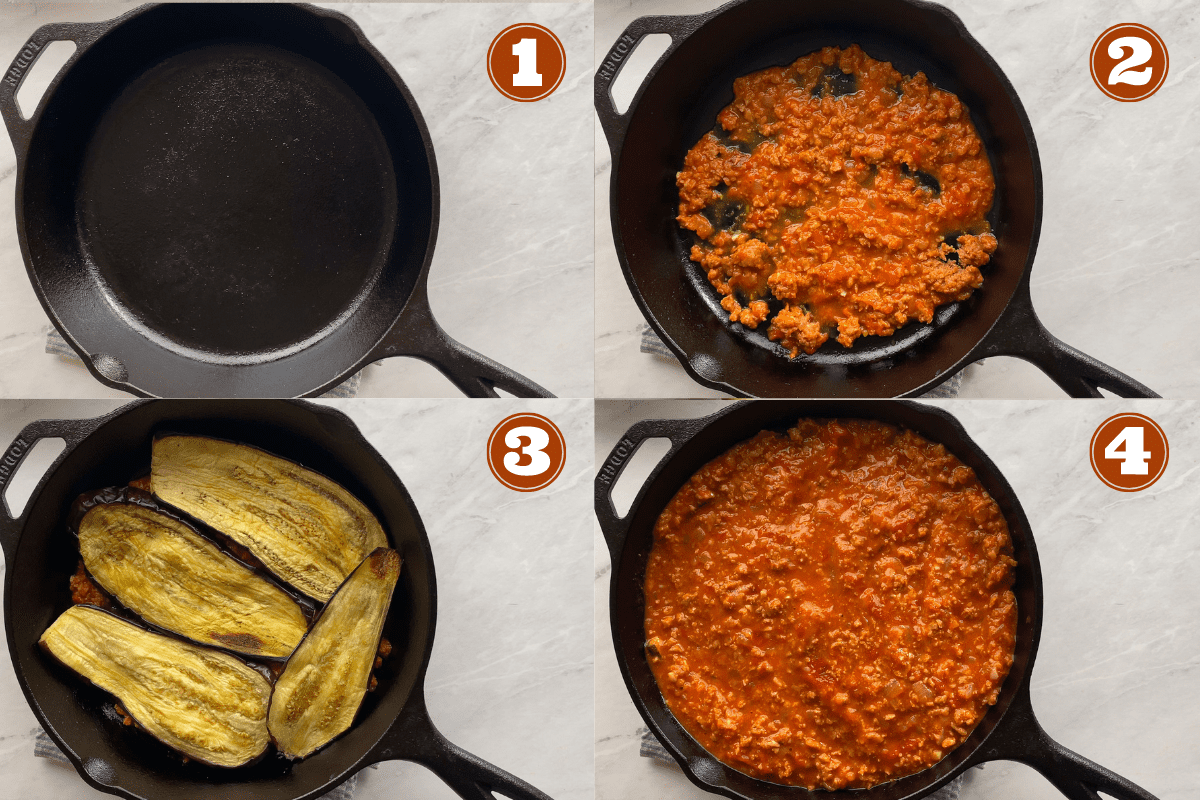
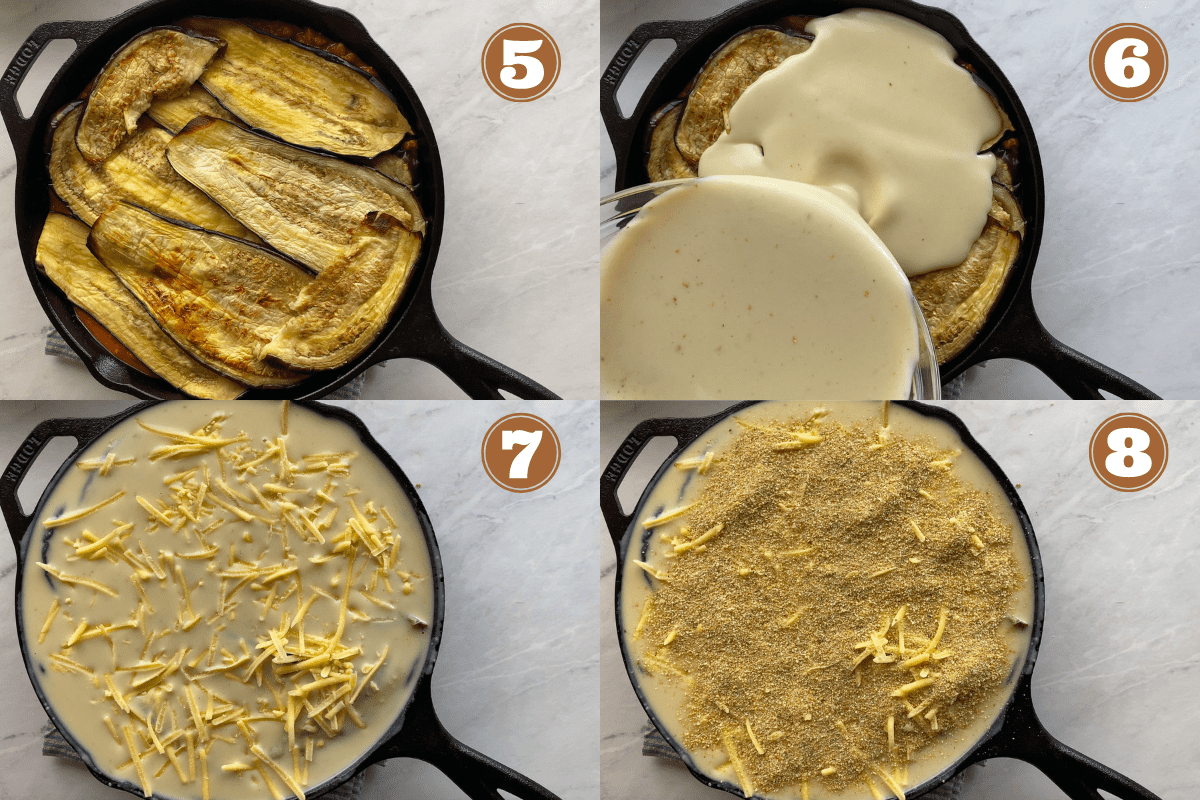
- (bottom): a little bit of ragu (less than ⅕th of total)
- half the eggplants in one layer
- rest of the ragu
- rest of the eggplants
- all the béchamel
- vegan mozzarella
- breadcrumbs
- (top) drizzle of olive oil
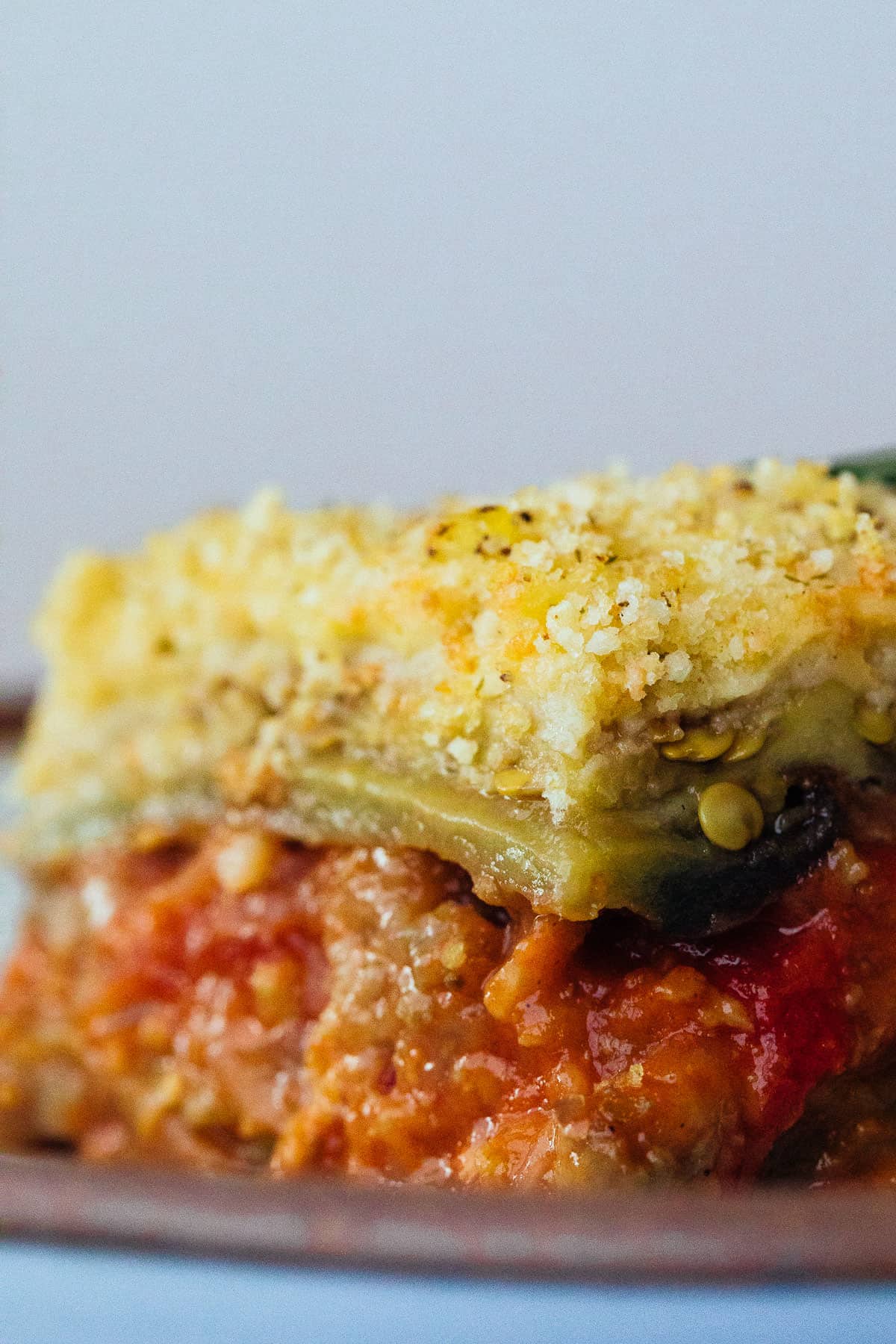
❓ Frequently Asked Questions
As is the case with most dishes—nobody knows for sure. The most likely origin of moussaka seems to be Arabia or the Levant. An Ottoman, Turabi Efendi, later published the first written recipe of moussaka in his "Turkish Cookery Book" in 1862.
However, most people associate moussaka with Greece. That's because in 1920s, a French-educated Greek chef, Nikos Tselementes, modernized the recipe by adding the classic French mother sauce: béchamel. Tensions were high between Turks and Greeks at that time, so it is likely that Chef Tselementes wanted to "Europeanize" the dish as much as possible.
In short: moussaka most likely originated in the Levant and made its way to Turkey, where it was adopted and modernized by Greeks by way of adding French béchamel sauce to the dish.
Yes! Some like to add a layer of potato or zucchini slices to their moussaka as well. So if you're not a big eggplant fan, feel free to substitute with these other vegetables to your liking or add them all!
Moussaka freezes very well. Place in an airtight container and keep in the refrigerator for up to 4 days or the freezer for up to 3 months.
Reheat in a covered skillet on the stovetop or the microwave.
In Turkey, musakka is usually served with rice or bulgur pilaf and tzatziki. I may be a monster for doing this, but I also love to make a sourdough sandwich with it.
Soggy = too much liquid. There are three main layers to a moussaka, and the problem could be caused by any one of them!
1) Ragù: make sure to cook it down so that a dipped spoon can stay upright for a bit.
2) Eggplant / potato / zucchini: Salting, drying, then baking them in the beginning will solve your problems with soggy vegetables.
3) Béchamel: Make sure to use enough flour and starch. It's normal for it to be runny before being cooked.
You could—but it may result in a soggy moussaka since salt draws out a considerable amount of water from the eggplants with time. Remember osmosis from science class? That's partly why it's important to salt watery vegetables before cooking them.
One caveat—potato isn't as watery as eggplant or zucchini, so if you're making the moussaka using only potatoes, no need to salt as heavily!
Yes! Here are a few options in order of easiest/most preferable to least:
1) Add ice-cold water and whisk like a banshee!
2) Use a hand-held blender to incorporate the rest of the flour and starch.
3) Sieve out the clumps and add slightly more potato starch to make up for the thickening effect.
I suggest you bake them instead of frying them. There is no discernible difference in taste... and your waistline will thank you.
Since there is béchamel in moussaka, it isn't gluten-free. However, you may use gluten-free flour and increase the starch by 1.5x to make it suit your dietary needs. A cashew béchamel is a great option too!
99% of the time, no, moussaka is not vegan. There is often meat in the ragu filling, as well as milk and eggs in the bechamel.
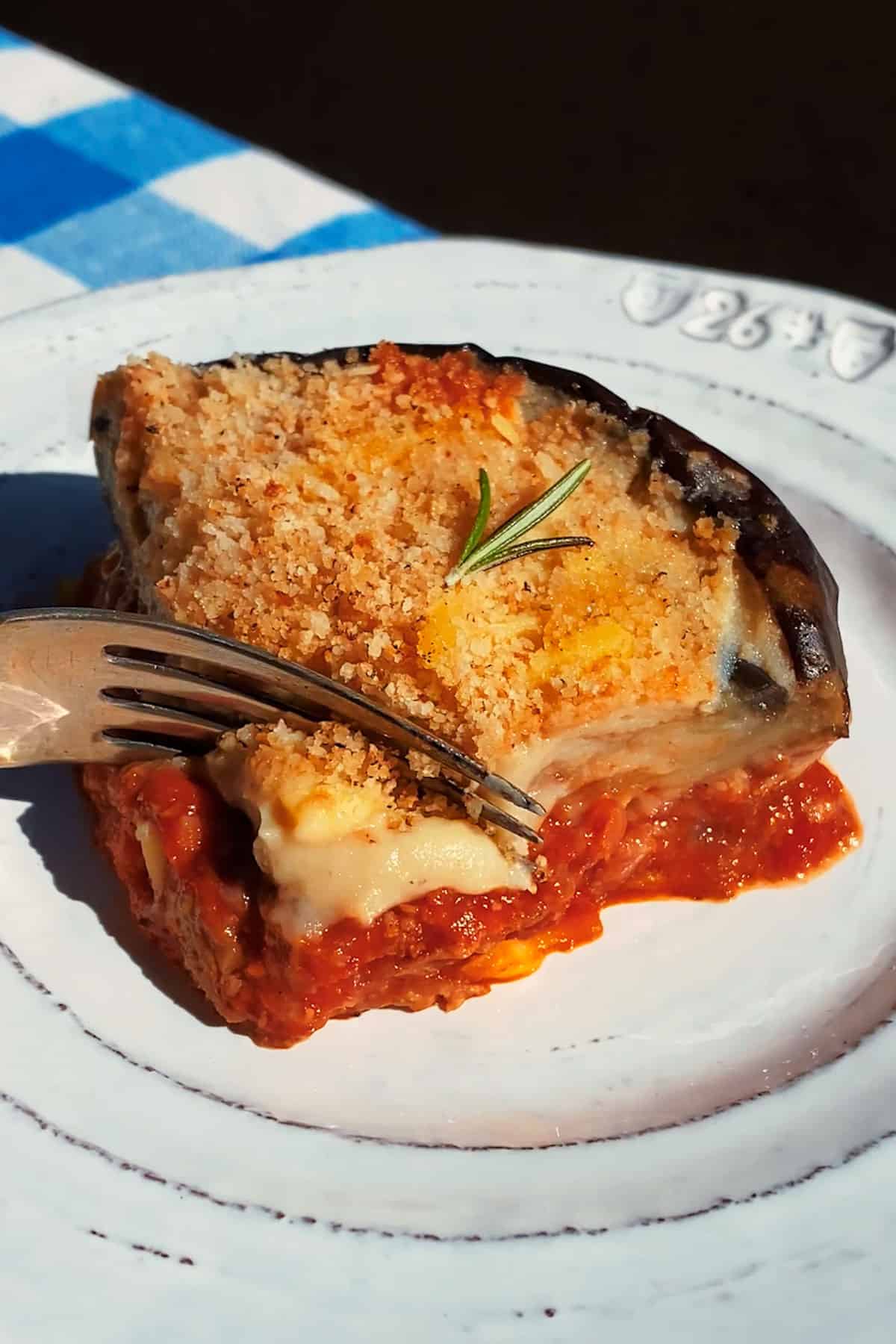
💭 More from Aegean Delight
Check out these other traditional Aegean recipes:
You can save this recipe for later on Pinterest, and keep in touch with me on YouTube, or Instagram!
Please do leave a comment & a rating if you make this vegan moussaka! I make sure to respond to each one and it helps a ton. Afiyet olsun (bon appétit)!
Print📖 Recipe
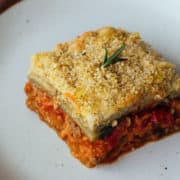
Vegan Moussaka
- Total Time: 3 hours
- Yield: 6 Servings 1x
- Diet: Vegan
Description
This vegan moussaka is as close to the original as it gets with a classic nutmeg béchamel, cinnamony ragu, and perfectly baked slices of eggplant. Can be made gluten-free and allergen-friendly with substitutions.
Ingredients
Eggplant:
- 2 large eggplants (~1kg / 2lb)
- 1 tsp salt (See Note 1)
- 2 tbsp olive oil
Vegan Ragu Filling:
- 1 tbsp olive oil
- 1 large onion, diced
- 5 garlic cloves, minced
- 2 tbsp tomato paste
- 400g vegan ground beef (homemade or store-bought, See Note 2)
- ½ cup red wine (or substitute with hot water)
- 1 cup hot water
- 1 tsp vegetable bouillon
- 400g tomatoes (fresh vine-ripened or canned San Marzano)
- 1.5 tsp sugar
- 2 tsp dried oregano
- 3 bay leaves
- 2 sticks of cinnamon (or ½ tsp ground)
- ½ tsp salt
Vegan Béchamel:
- 6tbsp (80g) olive oil
- 6tbsp (50g) flour
- 2.5 cups plant milk (unsweetened, unflavored)
- ½ tsp nutmeg, grated
- ¼ tsp garlic powder
- 1 tsp salt
- pinch of white pepper
- 1 tsp potato starch (See Note 3)
Topping:
- ⅓ cup breadcrumbs (See Note 4)
- 2 tbsp olive oil
- Optional: ½ cup vegan mozzarella shreds
Instructions
Prepare the eggplants:
- Preheat oven to 425°F.
- Slice the eggplants lengthwise (quarter-inch slices). Salt all sides and place in a colander to sweat for 30 minutes.
- Thoroughly dry the eggplant slices with cloth napkins or paper towels.
- Place on baking trays lined with parchment paper or silicone sheets and brush both sides with olive oil.
- Bake for 20 minutes until golden brown and set aside.
Make Vegan Ragu:
- Heat olive oil in a large pot over medium heat. Add and sweat the onion for 4 minutes. Add the garlic and tomato paste and cook for 2 minutes.
- Add the vegan ground beef, break it up, and cook for 5 minutes.
- Add wine and cook off the alcohol for 2 minutes.
- Mix and dissolve the vegetable bouillon in the hot water in a separate bowl and add into the pot.
- Add the tomatoes, sugar, dried oregano, and salt; then mix.
- Add the bay leaves and cinnamon sticks. Let simmer on medium heat for 20 minutes, until reduced to a very thick ragu. Remove bay leaves and cinnamon sticks before using.
Vegan Béchamel Sauce:
- In a large saucepan over medium heat, add the olive oil and warm for 30 seconds.
- Add the flour and whisk to form a paste. Cook, stirring constantly, for about 1-2 minutes, until the scent of raw flour is gone.
- Add plant milk gradually, a few tablespoons at a time, and continuously whisk, getting all corners and bottom of the pan. See FAQs in the post in case the béchamel sauce gets clumpy.
- Cook on medium-high heat, stirring, until sauce begins simmering. Reduce heat to low and cook, stirring, until the sauce is thick enough to cover the back of a wooden spoon—about 5 minutes.
- Stir in the grated nutmeg, garlic powder, salt, white pepper, and potato starch. If not using right away to top the moussaka, press a piece of plastic wrap over surface of sauce to prevent a skin from forming.
Assemble & Bake:
- Lower the oven to 350°F.
- Place a little bit of the vegan ragu (less than ⅕th) at the bottom of a baking dish (80-sq-in minimum, see notes). Place half the eggplant slices in one layer, then top with the remaining ragu.
- Place the remaining eggplant and pour over the bechamel.
- Sprinkle with breadcrumbs, drizzle with olive oil, and top with vegan mozzarella shreds.
- Bake for 40-50 minutes. If the top isn’t golden brown by this point, broil the top for 5 minutes. Let the moussaka rest for at least 15 minutes before slicing and serving.
Storage:
- Place in an airtight container and keep in the refrigerator for up to 4 days or in the freezer for up to 3 months. Reheat in a covered skillet on the stovetop on low-medium heat or the microwave.
Notes
1. Eggplants: Salting and drying the eggplants prevents a soggy moussaka. This way the only liquid at the bottom is the flavorful ragu. But if you find the process too labor-intensive, simply salt the slices with quarter the amount and bake them right away. Additionally, contrary to popular belief, nowadays salt isn’t necessary for taking out the bitterness of eggplants. Luckily, that bitter taste has been bred out of the modern eggplant.
2. Vegan Ground Beef: The homemade mushroom-walnut mince works great in this recipe. Impossible or Beyond ground beef, as well as any other soy mince would work as well. Don't want to bother with "beef" at all? Use cooked green or brown lentils instead for a more whole-food-plant-based approach!
3. Starch in Bechamel: Moussaka béchamel is quite different than the runny white sauce you may be familiar with. This Greek type of béchamel used in moussaka often has eggs for structure. For a vegan version, in addition to using more flour (~3 tablespoons per cup of milk), incorporating a starch ensures the final dish isn’t runny. You may substitute potato starch with 1.5 times the roux or double the amount of cornstarch if needed.
4. Breadcrumbs: Although not traditional, you may substitute the breadcrumbs with Panko.
5. Turkish Moussaka: If you’d like to simplify the dish, skip the béchamel to make the Turkish version of moussaka!
6. Baking Dish Size: The dimensions are very important for this dish—otherwise you may have leftover ingredients or the moussaka may not have enough height. 10-in-diameter skillet or a 10-in by 8-in tray both work. Make sure the total area of the dish is at least 80 square inches with a minimum 2-in lip.
7. Salt Type: This recipe lists table salt. You may substitute with Kosher salt by using double the volume (same weight).
8. Whole-food-plant-based: You may completely remove the salt and oil from the eggplants as well as the ragu. For the béchamel, make a cashew cream flavored with nutmeg.
9. Scale: Vegan moussaka is perfect for scaling up and saving in the freezer for busy weeknights! Just make sure to divide up the ingredients for each layer according to the baking dishes you'll be using.
- Prep Time: 1 hour
- Cook Time: 2 hours
- Category: Lunch, Dinner
- Method: Bake
- Cuisine: Greek
This recipe has been adapted from the Food and Cooking of Greece by Sara Nassopoulos.




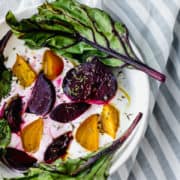
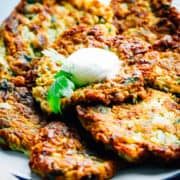
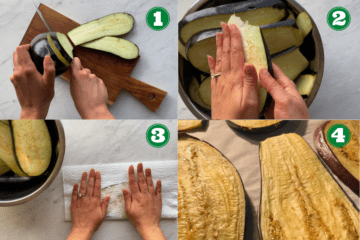
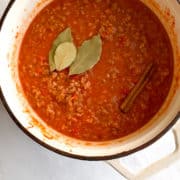
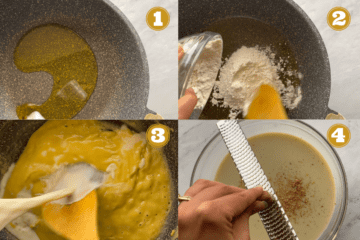
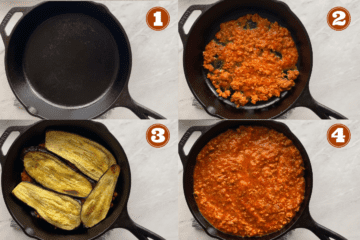
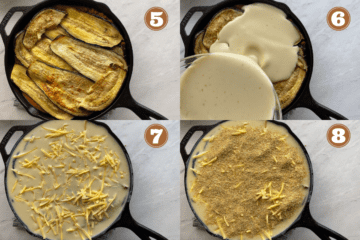
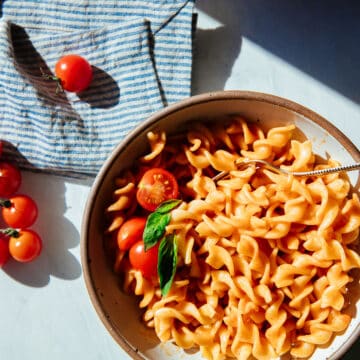
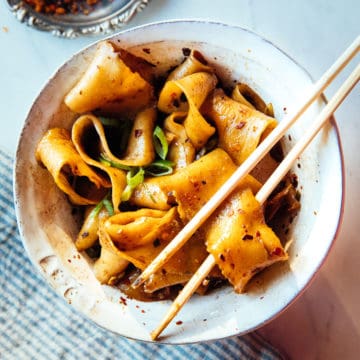
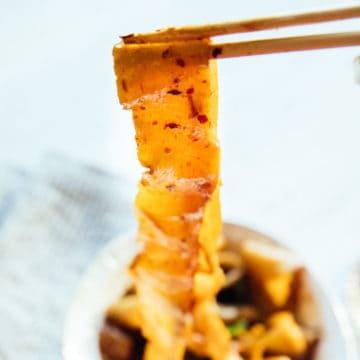
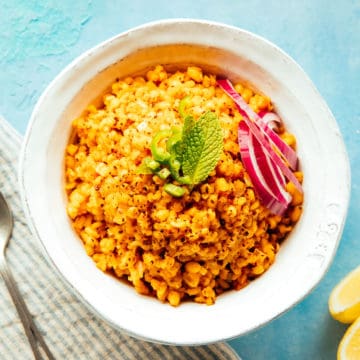
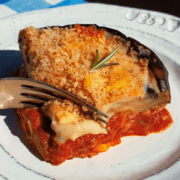

Charlotte
We made this moussaka multiple times! It's a keeper. Love the bechamel sauce. Didn't want to use a cashew based one
Gönül
Thanks so much for trying out the recipe, Charlotte! This béchamel is my favorite too!
Carolann
This recipe is a winner with my family, which includes a husband who is 100% Greek! I've made both the vegan version and I've also substituted ground turkey for the ragu and milk for the bechamel. It is truly delicious both ways! No one would ever know it was vegan.
Gönül
Awesome!! So happy your family enjoys this recipe multiple ways 🙂